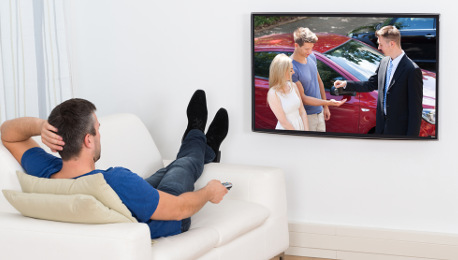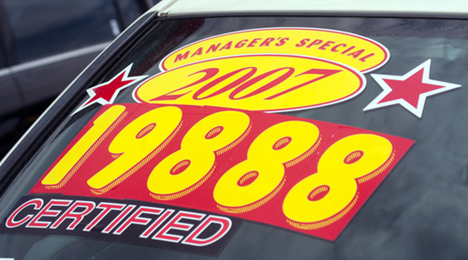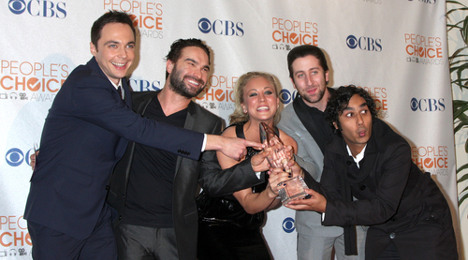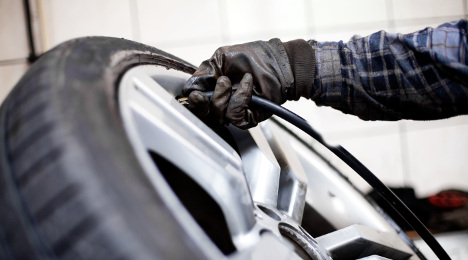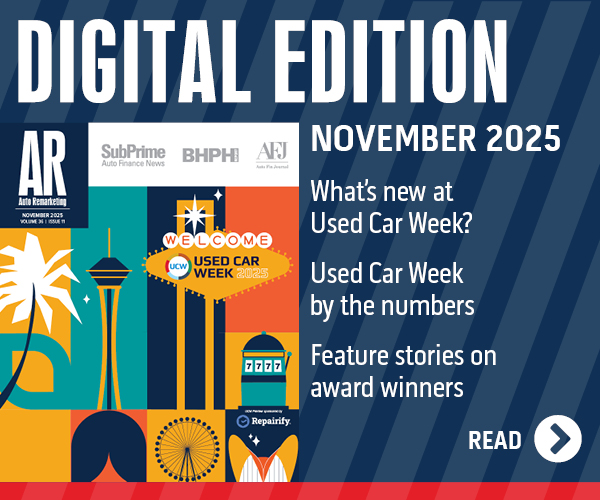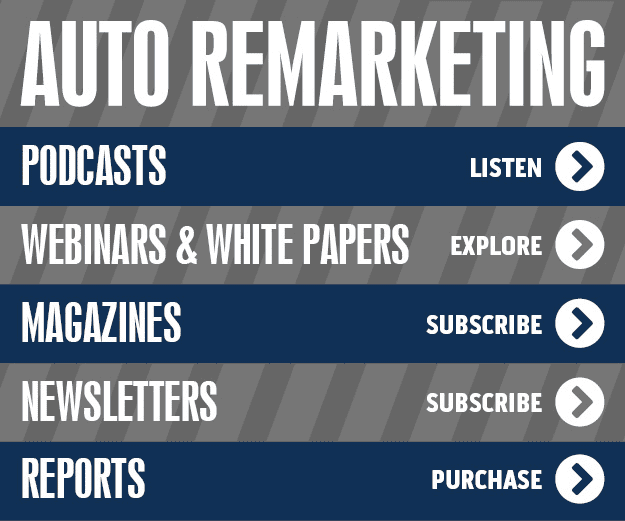In today’s digital world, television advertising is obsolete … or is it?
It’s a question many experts are pondering, and those in the auto industry are no exception.
A 2014 article in Dealer Marketing Magazine asked, “Does automotive marketing still rely too heavily on TV advertising?,” while one at NADAFrontPage.com touted a study suggesting that car shoppers are influenced most by TV advertising.
To help gain some perspective on the issue, Auto Remarketing talked to Jeremy Anspach, chief execuitve officer of digital advertising provider PureCars, which in October was acquired by Raycom Media.
Anspach stressed that what while digital advertising is a necessity given today’s high number of “cord cutters,” it’s not prudent to pull the plug on TV advertising.
While retail sales in general suffered in 2015, auto sales saw a record year. Anspach noted that many retailers have been quick to abandon TV in favor of digital, while he thinks the auto industry has understood the importance of maintaining a balance between the two.
“Put simply, car shoppers are still influenced by TV ads,” he said. “And these ads can still hold relevance across all industries if accompanied by a tailored digital strategy.
“It’s a marketer’s role to show the right message at the right time,” he continued. “When you look at the debates of whether or not you should be on television or not on television, I believe that a good marketer shows the right message at the right time on the right screen.”
Anspach pointed out that as Internet activity has increased, television activity has increased — in almost a near-linear fashion.
The hypothesis is that when one watches television, 87 percent of the time they have a second screen in their hand, or on their coffee table, or on their lap.
“We’ve become very ‘ADD’ if you think about it that way,” Anspach said.
A key, he said, is understanding how those screens work in harmony — specifically, how television stimulates online learning.
“There was research that shows that two-thirds of smartphone users will use their smartphone to learn more about a commercial that stimulated them,” Anspach said. “So let’s say a dealership is running an ad on television for a Silverado, and they’re presenting this $299 lease deal. Well, if the ad is effective, is doesn’t drive lot traffic directly, it drives online learning.
“If that dealer then isn’t investing in the right digital strategy, they need to assume that their competitor is — or one of their competitors — is. And the probability of that competitor wining from that dealership’s traditional TV buy is likely.”
Anspach said that the push toward online learning happens collectively.
“Because that dealership didn’t advertise a certain model doesn’t mean that no one is shopping for that model. So we’re looking for the micro-moments that stem from online learning, whether it’s search, whether it’s going to review sites, whether it’s going to YouTube,” he said. “There’s been huge growth in YouTube reviews from a viewer perspective, nearly 100 percent year over year. So we’re looking at all these different variables and saying ‘is this user showing intent on a vehicle the dealership (that’s our client) needs to sell, and, if so, showing a highly relevant message.”
Anspach talked about PureCars’ “SmartAdvertising” approach.
“We’re able to connect the dots across all screens and actually look for the micro-moments of a user that shows intent to buy a vehicle that the dealership has the need to market. And by doing this, it’s a balanced approach,” he said. “It’s not throwing all the dollars towards one media channel, it’s not all towards TV, it’s not all towards search, it’s not all towards display, video, social, etc. It’s about ‘look at the micro-moments’ of the user and if the dealership is running TV, we need to know that so we can ride the online learning journey post the ad.”
Anspach said that while PureCars as a company is a separate business unit of Raycom Media, the company is able to do a lot more with its clients in Raycom markets as it relates to connecting the dots.
“So in Raycom markets we oftentimes find their customers who buy TV from Raycom and leverage their auto solutions powered with PureCars that that balance is happening. So we as a company are programatically shifting the dollars throughout the month as we see the opportunities. Whether it’s a Raycom market or not we find this to be the biggest efficiency we solve for dealers across the country.”
All that being said, he’s observed extremes when it comes to auto advertising.
“I see dealers that oftentimes are on each end of the spectrum,” he continued. “At times they’re so heavy in traditional (advertising) that they’re completely lacking in digital, and at times the more ‘progressive’ dealer is highly digital with little to no traditional.
“Like any good advertiser,” he continued, “you have to look at the complete ecosystem and be sure you’re not putting too many eggs in one basket.”
With the millions of recalls in the pipeline nowadays, compliance expert Randy Henrick contends dealerships find themselves in “a difficult situation,” especially in light of how the Federal Trade Commission settled with General Motors and two large dealership groups about how certified pre-owned vehicles are marketed.
Back in January, the FTC indicated GM as well as Jim Koons Management and Lithia Motors touted how rigorously they inspect their vehicles, yet failed to disclose that some of the used models they were selling were subject to unrepaired safety recalls.
Under proposed consent orders, which would remain in effect for 20 years, the FTC said the companies are prohibited from claiming that their used vehicles are safe or have been subject to a rigorous inspection unless they are free of unrepaired safety recalls, or unless the companies clearly disclose the existence of the recalls in close proximity to the inspection claims.
And with the ongoing Takata airbag inflator issue involving possibly 60 million units, recalls could include a wide array of CPO models. Henrick explained the precarious position dealers might face as a result.
“Having to advertise for every certified vehicle that this vehicle may be subject to a recall — unless the dealer services the brand and cures the recall or gives the customer a copy of the recall certificate — dilutes the certification value as recall information can be accessed on the (National Highway Traffic Safety Administration) website,” said Henrick, who was Dealertrack’s regulatory and compliance counsel for 12 years and now conducts industry consulting at www.autodealercompliance.net.
“But when you are dealing with hundreds of used vehicles, it is not practical for a dealer to look them all up,” Henrick continued. “If a dealer is selling another brand’s used car, the dealer can’t practically cure the recall.”
The FTC added the proposed orders with GM, Koons and Lithia also would prohibit the companies from misrepresenting material facts about the safety of used vehicles they advertise.
These proposed orders will also require the companies to inform recent customers, by mail, that their vehicles may have an open recall.
“Safety is one of the biggest considerations for consumers shopping for a car,” Jessica Rich, director of the FTC’s Bureau of Consumer Protection said when the regulator announced its settlements at the beginning of the year.
“So companies touting the comprehensiveness of their vehicle inspections need to be straight with consumers about safety-related recalls, which can raise major safety concerns,” Rich continued.
Is the FTC achieving its objectives as a result of this action? Henrick isn’t so sure.
“I think as consumers begin to see these notices on all certified used car sales, they will become insensitive to them and that will hurt the recall business, which is the exact opposite effect the FTC would like to achieve,” he said.
A majority of respondents to a recent Kelley Blue Book survey said they would be more likely to purchase a particular vehicle brand from a company involved in a social awareness campaign — but a similar majority said they are unaware of any such campaigns.
Many automotive companies have campaigns that seek to inspire social good, and that commitment to charitable causes can resonate with consumers, lending a “human face” to the company and strengthening brand awareness.
Of the 1,172 people participating in the KBB survey, 62 percent said they are more likely to purchase a vehicle brand if that brand is promoting a social good campaign. But 60 percent of respondents said they are unaware of any.
“It’s clear consumers appreciate automakers that give back to the community through charitable work, and they like to spend their hard-earned money with a company that is making a positive impact in the lives of others,” said Karl Brauer, senior director of automotive industry insights at Kelley Blue Book. “Awareness, however, may be the bigger challenge, with a majority of consumers unaware of any social good efforts sponsored by automakers.”
Highlights from the survey:
— For respondents who had heard of specific social good campaigns, Subaru had the highest percentage of recollection at 61 percent, followed by Honda at 44 percent and Ford at 29 percent.
— Millennials are more aware of the Helpful Honda Dealers Campaign than any other age group. (Launched in California in 2007, the campaign aimed to end the stigma that auto dealers are untrustworthy by sending Honda dealers out into the community to do perform “random acts of helpfulness” such as washing cars and feeding parking meters.)
— Ford, Chevrolet and Subaru are the first brands that come to mind when consumers think of social good campaigns.
— Fifty-six percent of respondents who support these types of campaigns say they would like auto manufacturers to support army, military and/or veteran organizations, followed by children's charities at 42 percent.
— Sixty-four percent expect auto manufacturers to carry out social good campaigns.
— Seventy percent say they would like to see more automakers promote social good campaigns.
— Seventy-seven percent of those surveyed said they donate money and/or goods to charities.
During my college days in the early 2000s, you could say the words “Dave Matthews Band” and immediately catch the attention (or ire) of most people within earshot.
That’s why a press release from a New Jersey Kia dealership piqued my interest on Monday.
As part of the store’s “10 Months of Giveaways” to celebrate its 10th anniversary, Nutley Kia is conducting a drawing for two Dave Matthews Band concert tickets. Consumers can enter to win by submitting their information on Nutley Kia’s website. (Earlier drawings have included tickets to a Billy Joel concert, tickets/dinner/hotel stay for the New York International Auto Show, a KidTrax Kia Sing-A-Long Soul and an Apple Watch)
“Summer is a time to have fun. At Nutley Kia we value our customers and we always want to see a smile on their face,” Jim Russomano, owner of Nutley Kia, said in the news release on the DMB drawing.
“Our giveaway celebration is a chance for us to give thanks to everyone who has supported us throughout the years,” he added.
I would argue it’s also a way to connect with potential customers.
In fact, the store itself said in the news release that customers can receive exclusive offers and automotive advice from the dealership when they register.
The concert tickets may have been the hook, but I imagine it's the exclusive offers and auto advice that actually land a customer.
Sure, DMB is long past its prime, at least in terms of pop culture relevance. And, no, a free concert ticket wouldn't convince me as a consumer to buy from a dealership.
But a properly timed follow-up might get me thinking about my car's service needs.
When asked how this giveaway has helped to generate additional leads or sales opportunities, Russomano said in an email that “direct measurement of the program successes are difficult to measure,” but noted that year-over-year sales have climbed 27 percent.
And I imagine the store has received a few curious second-looks.
Heck, I don’t live in New Jersey, nor am I in the market for a car. But a giveaway about a band I happen to like was enough to draw me in, even as a journalist who was simply interested in reading the press release.
For our May 15 issue of Auto Remarketing, we look at a few ways dealers aim to draw in potential customers.
And it goes beyond commercials, inflatable gorillas or full-page newspaper ads.
You will read about an in-dealership TV network service, a rotating elevated vehicle display, the importance of vehicle description labeling, digital marketing and the ties between advertising and social media.
Admittedly, this is the tip of the iceberg for the various ways dealers are getting their message out.
But the goal is to give you a snapshot of how the dealership advertising game is changing and offer a few strategies for making the most of it.
Stay tuned to your inbox and mailbox for more.
Two experts in digital marketing said one of the best elements of this dealership tool that helps move more metal and keep the service drive flowing is how it can be measured.
Those same two experts with whom Auto Remarketing visited during this year’s NADA Convention & Expo also acknowledged that one of the challenging parts of digital marketing is the fact that so many little components can be measured.
So what should dealers do? Search Optics’ chief relationship officer Christian Fuller summed up the situation this way:
“There’s a lot of things you can do to spend money online, but it’s about how smart you are in your spend,” Fuller said. “The focus always needs to be on the results and what is the return on your advertising dollars. You’ve got to show how it’s helping your cars to be sold, and there’s a lot of good technology out there to be able to do that.”
By now are you thinking, “Wonderful, even more technology that’s going to be a monthly cost already eating away at my thin gross margins.”
Well, Netsertive automotive digital marketing evangelist Gary Galloway explained how he turns to a tool that’s readily accessible, especially when he’s just beginning to work with a dealer group.
“One of the first things I do with any dealer group is just assess their state of analytics. A lot of times, they don’t even know if they have any or not. When I say analytics, I’m talking about basic website analytics,” Galloway said.
“I only do metric analytics through Google. A lot of website vendors have their own back-end and their metrics. To streamline that, I just use Google Analytics so there’s one place to log into. That allows me to compare dealerships within the group side-by-side with one dashboard,” he continued.
A key metric both Fuller and Galloway mentioned to Auto Remarketing is how dealerships measure conversion rates. How much did that special campaign to improve the service drive work? How often did potential buyers fill out a form stemming from a special sale in your used department?
“A big piece of this whole digital marketing thing is measuring conversion rates,” Galloway said. “You have website traffic coming from a certain campaign; so, what happens to that traffic once it gets to your website? Does it convert to a phone call or does it convert to a lead?
“The next thing I do is to see how they have conversions set up on their website. A dealer can define a conversion any way they want. For me, a straight-up conversion is a form being filled out on the website. That’s how it’s set it up. And it has to be set up in Google,” he continued.
Once a dealership has some processes in place, Galloway indicated managers can first establish a benchmark for comparison and further evaluate their efforts from that point.
“Nine out of 10 dealer groups I’ve worked with had no idea what their conversion rate is,” Galloway said. “The average website for any industry converts at a 2-percent rate. There are some dealership websites that convert at 6 percent or even 12 percent. That’s a big deal when you’re having 50,000 website visitors coming to your site each month.”
And while that 50,000 figure in Galloway’s example might be robust, he shared another formula that often impacts how well a dealership is performing with its digital marketing efforts.
“It’s all common sense, but it’s so hard to execute,” Galloway began. “It’s being very deliberate with your clicks.
“If you’re doing a certain campaign, you want that click to go to a relevant page that’s engaging and makes it easy for the customer to share more information or contact the dealer,” he continued. “The groups I’ve worked with to drive their conversion rate up have done things as simple as setting the contact form on that page without needing another click.
“What I’ve found in research is for whatever website click, dealers halve their audience,” Galloway went on to say. “Say you have 50,000 people coming to your website; with every click that group makes, you’re down to 25,000. With another click you’re down to 12,500. Just minimizing the number of clicks to get that consumer to where they want to go is one of the things I’ve done with my groups.”
Both of these digital marketing experts conceded that sharpening a store’s plan can be challenging, especially with how many other chores need to be accomplished.
“The biggest challenge they have is managing all of this,” Galloway said. “General managers have so many things going on. They have personnel issues, parts issues, sales issues, co-op issues. Really one of the release points for them is taking off their digital marketing concerns so they don’t have focus on that. They can focus on other things.
“Dealers are struggling to separate all the noise and get down to what can really help them,” he added.
Senior editor Joe Overby contributed to this report.
It’s ubiquitous to the waiting room, whether you’re at the dentist, dry cleaner or dealership.
That TV, serving up cable news or daytime talk shows as background noise — alongside the long-expired People magazines strewn across the coffee table.
The problem with this scene, if you’re a dealer, is not just that your competitor’s advertisement may come up during “The Jerry Springer Show” commercial break.
You’re also missing out on a chance to connect with perhaps the best of prospects, sitting right there in your service department waiting room.
That’s part of the thinking behind the services of Automotive Broadcasting Network, led by former Asbury Automotive Group executive and longtime dealer Jerry Daniels.
One of the many services the company provides is TV programming via CBS for the dealership’s service department waiting room.
The company explains in a video on its website that through research, ABN has found that almost 70 percent of customers in the service department waiting area either are looking to buy a car now or will be within the next six months.
So why not reach out to those customers while they’re sitting there waiting? They’re already in your store, and many (if not most) have purchased from you before or are at least comfortable enough to do business with the store.
“It’s not a hard sell,” Daniels said in a recent phone interview with Auto Remarketing. “These are the dealership’s best prospects.”
As explained in the video, the service aims to keep competitor ads off the set in the showroom, offer stronger programming options for the consumer in the waiting room and improve customer satisfaction and loyalty, all while only showing video material designed to help that specific dealership to boost sales and service — like calls-to-action, vehicle walk-arounds or maintenance tips — instead of the competition’s commercial.
And instead of “Springer,” you get “The Big Bang Theory.”
Businesses of all stripes have tried the inflatable gorilla, Uncle Sam spinning a sign and whatever you call that tall, wavy windsock.
Sure, they might catch the eye of a passer-by.
But so can the actual product you’re selling — especially if it’s a spinning vehicle lifted 10 feet in the air.
That’s the idea behind what 360 Auto Display provides to dealerships: a structure that elevates and rotates vehicles on the lot to draw customers in.
Auto Remarketing recently caught with up with 360 Auto Display owners Dan Matheus and Chris Purtee to explain the allure of a rotating vehicle.
The Houston-based outfit is working with dealers of kinds, they say, from luxury franchised stores to buy-here, pay-here shops, from California to North Carolina.
And in customer feedback, dealerships have told the company, “Motion creates emotion,” Purtee said in the phone interview.
“You go down dealership row where it’s dealership after dealership after dealership, that whole front line just looks the same to motorists,” Purtee said. “You’ve heard the term ‘interruption’ used in advertising, and that’s what this does. It’s an interrupter. It gets them to look and gets them into the lot.”
What they often hear, particularly from used-car dealerships, is that the rotating display, by prominently showcasing the vehicle, can help move cars that have been sitting on the lot for a while, Purtee said.
And it may not even be to showcase one particular unit that needs moving; the dealership could use the display simply to showcase a certain model on which they’re running a rebate special, for instance.
Dealers can also put stickers or customizable banners on the display unit for advertising purposes.
The point is to get the shopper on the lot.
Logistics behind set-up
Matheus said 360 Auto will come in to do the initial set-up for the rotating display and balance it. The company will also train the dealership’s porters or crew members on how to switch out the vehicle when necessary — say, for instance, a customer wants to buy the car on display.
In terms of roadside visualization, the vehicle is elevated 10 feet, Matheus said, then you tack on the actual height of the vehicle. In going through research, the company found that in terms of a rotating vehicle, the minimum height to avoid safety mishaps — i.e., someone bumping their head on the vehicle — is around 8 feet.
“At 10 feet high, there’s no chance that someone’s going to be able to walk into the parking lot looking at a car and get bumped in the head,” Matheus said.
Additionally, that’s about the maximum height when transporting the vehicle display to avoid trouble with transportation regulators.
Ten feet is also an ideal height, Matheus said, in terms of catching a driver’s peripheral vision.
“If it’s up higher than that,” he said, “you kind of lose it. Also, it’s below the parking lot lights, so the parking lot lights shine down on it. And we have lights, spinning around with the car that are shining up on the car, too.”
Additional measures on safety
The first question that 360 Auto will typically get from a dealer is, what about the wind?
The company’s answer to that?
“We’ve got an engineering stamp for 92 mph winds,” Matheus said.
Unless wind speeds are above 92 mph, the dealership does not need to take the structure down.
The structure was built so that in high wind speeds, “the unit will nose into the wind,” much like an anchored sailboat that “floats around and points into the wind,” Matheus said.
“And then once the wind lets up, where it’s safe, it’ll get going,” he said.
In other words, with high-speed winds, it is built to stop spinning. Then once it’s safe, it will begin again.
Of course, in the case of something like a hurricane or tornado, it might not be a bad idea to take the structure down, although the dealership may have more pressing concerns at that point, they said.
In terms of additional safety measures, the company has a safety video on its website and it trains dealership personnel on site on switching it out when they set the unit up. The process is relatively simple and takes 10 minutes to 15 minutes.
Black Book on Thursday announced a distribution agreement with HP360 that enables the full-service marketing company to offer Bullseye Prospecting, a turnkey solution for its dealer clients looking to launch more efficient marketing campaigns.
Powered by data from Black Book, Bullseye Prospecting is designed to reduce and consolidate the many different touch points involved in the development and execution of a customer campaign. Dealers and their marketing partners often work with several different vendors, all who add to the overall cost of production after markups are taken into effect. Bullseye Prospecting seamlessly can leverage economies of scale for data coming from DMS, consumer, incentives, and vehicle equity and valuation sources.
The program also can leverages partnerships with photo and printer vendors for direct marketing collateral.
“Bullseye Prospecting allows our team to expand our 360-degree marketing concept throughout our entire network of automotive clients,” said Lane Kidd, executive vice president of HP360. “From direct mail and full-service advertising plans, Bullseye Prospecting reduces campaign costs, enabling dealers to realize greater profits in their customer campaigns.”
Black Book senior vice president of sales Jared Kalfus also discussed the company’s latest agreement.
“With Bullseye Prospecting, HP360's automotive clients will see a greater return on their marketing investment, which will result in higher client satisfaction,” Kalfus said.
“Additionally, the ability to scale for seasonal campaigns and the ease in which campaigns can be executed from its turnkey approach will result in a more seamless solution to customer outreach and campaign reporting,” he went on to say.
To schedule a demo of Bullseye Prospecting, visit BullseyeProspecting.com.
There is a March piece on the Think With Google blog about a car shopper — 32-year-old Stacy — who had more than 900 “digital interactions” during three months of vehicle research.
The story, written by Lisa Gevelber, considered interactions to be “searches, website visits, video views, and clicks.”
The massive amounts of data points involved with Stacy’s process speaks to what Chad Bockius and the team at CarStory are trying to accomplish through the company’s Market Reports: take the heap of research, data and information that consumers would otherwise have to sift through, and present it in a way that provides context.
In other words, make the research process simpler for the shopper.
The challenge in the auto industry, says Bockius, is that “there’s a lot of data, but very little insight.”
CarStory Market Reports are designed to take the data and package it together to simplify the car research process, while providing some context.
“Turning data into insights is what is working for us,” Bockius said during an interview at this year’s NADA Convention & Expo.
The reports were launched at last year’s NADA Convention Since then, more than 15 million consumers have tapped into the merchandising reports and more than 6,000 dealers have begun utilizing the reports.
They’re designed to help dealers turn more website visitors into buyers by boosting consumer engagement with the vehicle details page.
In a news release, Bockius — CarStory’s chief marketing officer — said: “Research shows that the more car shoppers engage with a VDP, the faster a vehicle will sell.”
In the convention interview this year, Bockius explained how the Market Report can help simplify vehicle research and contextualize the wide swaths of car research data.
“It starts with price. You find a car that you’re interested in, the first thing you want to know is, is it a good deal?” he said.
But determining that requires the shopper to go out and find cars just like it, account for variances like mileage, etc., and then compare the prices. Bockius said CarStory does that work for the shopper and in its Market Report would share broader context about vehicle’s price, for instance (i.e. the report might note that 90 percent of cars just like it are more expensive, he said).
“The consumer now has this sense of confidence,” Bockius said.
In talking with consumers, Bockius has found that they’re not trying to squeeze money out of the dealer; they’re really just safeguarding themselves against the same thing.
“They just want to know that they’re getting a fair deal,” he said.
The second most importance piece of information is condition, Bockius said, and CarStory shares some context here, as well. For instance, a Market Report might note that the car was driven half as much as other cars like it, Bockius said.
And the list of insights goes on from there.
“The point is, we are helping build confidence in the decision and we are eliminating a lot of research that they would otherwise have to do,” Bockius said.
Dealers who want a new hook to reach their customers and drive traffic to their service departments could leverage the marketing and safety initiative orchestrated by the Rubber Manufacturers Association (RMA).
Under the banner of National Tire Safety Week 2016, RMA is offering free “Be Tire Smart” brochures and other materials. Participating dealers can join the nationwide effort to promote tire care through advertising, promotions, free tire pressure checks and community and media outreach.
National Tire Safety Week — which will be celebrated May 29 through June 4 — is an initiative of RMA’s “Be Tire Smart – Play Your PART” program, a year-round effort designed to help drivers learn the simple steps they can take to ensure that their tires are in good working condition. RMA is the national trade association for tire manufacturers.
“National Tire Safety Week is all about reminding busy consumers of the importance of taking good care of their tires,” said Anne Forristall Luke, RMA president and chief executive officer.
“Properly maintained tires have a proven, positive impact on safety, save consumers money and benefit the environment through greater fuel economy, Forristall Luke continued.
The Be Tire Smart program is funded by RMA’s tire manufacturer members:
—Bridgestone Americas
—Continental Tire the Americas
—Cooper Tire & Rubber Co.
—Goodyear Tire & Rubber Co.
—Michelin North America
—Pirelli Tire North America
—Toyo Tire Holdings of Americas
—Yokohama Tire Corp.
Dealers interested in obtaining free RMA materials for National Tire Safety week can order them online at www.betiresmart.org.

